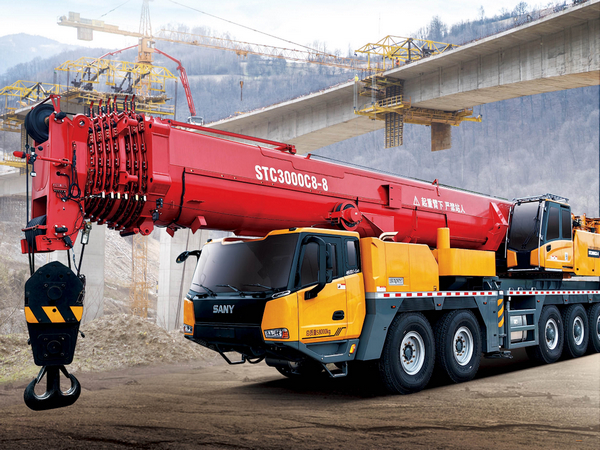Crane machinery refers to electromechanical equipment used for vertical lifting or vertical lifting and horizontal movement of heavy objects. Cranes as large as several thousand tons and hoists as small as several hundred kilograms are all in this category.
As one of the eight special equipment after elevators and pressure vessels, crane machinery is crucial to the continuous expansion of industrial production scale, but it is inevitable that there are still many dangerous factors before and after its use, which poses a threat to people's lives and property that cannot be ignored. Today, let's take a look at the precautions in the operation of crane machinery!

Before operation
1. The crane operator must be certified.
2. Confirm that there is no one in the crane working area.
3. Confirm that there is no fault alarm in the crane.
4. Wear safety protection equipment correctly
During operation
1. Before starting, the on-site environment must be confirmed to be safe.
2. Before starting, a start warning signal must be issued, and the crane shall not be inspected and repaired while it is working.
3. If the crane is overloaded or the weight of the object is unclear, it shall not be started, and the brakes of the lifting and luffing mechanism shall be adjusted under load.
4. The structure or parts have defects or damage that affect safe work, such as failure of brakes and safety devices, damage to the anti-loosening device of the hook nut, and damage to the wire rope reaching the scrap standard.
5. The binding or hanging is not firm or unbalanced and may slide, and there is no padding between the corners of the heavy object and the wire rope.
6. If there are people or floating objects on the hoisted object, it is not allowed to pass over the top of the person during hoisting, and there is no one under the boom.
7. The limit position limiter shall not be used to stop the car.
8. When the hoisted weight approaches or reaches the rated lifting capacity, the brake should be checked before hoisting, and the hoisting should be carried out after a small height and short stroke trial hoisting.
9. For cranes without a descent limit, when the hook is in the lowest working position, the wire rope on the drum must maintain the number of safety circles specified in the design.
10. For cranes without reverse braking performance, except for special emergency situations, the reverse car shall not be used for braking.
Emergency measures
1. After an object hitting accident occurs, rescue of the injured should be organized immediately and treatment should be carried out according to the injury situation.
2. When mechanical injury occurs, the source of danger should be cut off first to prevent secondary injury, and treatment should be carried out according to the injury situation.
3. When electric shock occurs, cut off the power supply to get rid of the electric shock as soon as possible.
4. When falling from a height, the injured should be bandaged, hemostatic, and fixed as necessary, and treatment should be carried out according to the injury situation.
PART·2 Ten Do Nots for Safe Operation
1. Do not lift if the load exceeds the rated load.
2. The work site is dim and the site cannot be seen clearly. Do not lift if the object is lifted for the first time or the command is unclear.
3. Do not lift if the lifting rope and accessories are not tied firmly and do not meet the safety requirements.
4. Do not lift if the heavy object is directly processed by hanging.
5. Do not lift if it is tilted or hung.
6. Do not lift if there are people standing on the workpiece or if there are movable objects.
7. Do not lift explosive objects such as oxygen cylinders and acetylene cylinders.
8. Do not lift objects with edges and corners and unpadded edges.
9. Do not lift objects with unknown weight and objects buried underground.
10. Managers violate regulations and do not lift.

1. Units using lifting machinery should frequently check the operation and good condition of lifting machinery and regularly maintain and maintain lifting machinery. This includes annual inspections, monthly inspections, weekly inspections and daily inspections.
2. When abnormal conditions are found in lifting machinery during inspection, they must be handled in a timely manner, and operation with defects is strictly prohibited.
3. Units using lifting machinery must apply for safety and technical inspection of lifting machinery in use one month before the inspection validity period. The regular safety supervision and inspection cycle for lifting machinery in use is two years.
4. Drivers, hook workers, command workers, and maintenance workers of lifting machinery must undergo professional and technical training, and pass the assessment of the municipal special equipment safety supervision and management department, and obtain the "Safety Operation Certificate for Special Equipment Operators" before they can go to work.












